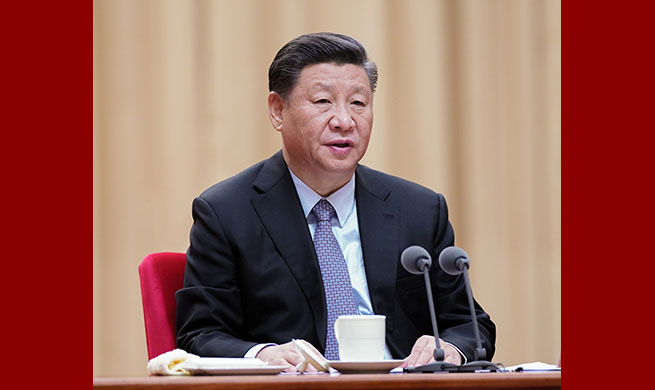ROME, Jan. 8 (Xinhua) -- Italy's banking sector is starting 2020 in better health than it did a year earlier, experts have said here.
For years, some of Italy's largest banks have suffered from high levels of non-performing loans and weak balance sheets. But as the new year gets underway, Italian government's efforts to improve the health of the three key lenders are showing positive trend.
"The overall health of the Italian banking system is still below that for the average for European Union countries," Giandomenico Piluso, a professor of economic history at the University of Siena, told Xinhua. "But the gap is shrinking. The Italian system's health is coming into line."
According to figures from financial regulator CONSOB, the value of non-performing loans in the financial system was steadily reduced from an all-time high of 341 billion euros (379 billion U.S. dollars) in 2015 to 165 billion euros (183 billion U.S. dollars) in September of 2019 -- a strong indicator of the sector's overall health.
The largest troubled bank in Italy is Monte Dei Paschi di Siena, which has struggled since the start of the world economic crisis more than a decade ago. The Italian government took a 68-percent stake in the lender in 2017 to help stabilize it. The bank has sold off around two-thirds of its non-performing loans -- worth more than 30 billion euros (33.5 billion U.S. dollars) -- to shore up its balance sheet. According to bank figures, such impaired loans now account for less than 13 percent of the institution's overall loan portfolio, more than a year ahead of the timetable stated in the bank's restructuring strategy.
With the improvement in the bank's health, the government has said it would start to sell its shares early this year.
"The bigger the bank the more serious the challenges are," Piluso said. "Because Monte Dei Paschi di Siena is so large, the challenges have been serious. But the bank is much healthier than it had been."
Two smaller banks, Banca Carige and Banca Popolare di Bari, have also struggled.
Banca Carige carried out a 700-million-euro (780-million-U.S.-dollar) capital increase in December and a depositor protection fund owned collectively by Italian banks has taken a majority stake in the lender as it seeks to improve its health.
Meanwhile, Italy's Inter-bank Rescue Fund agreed on Dec. 31 to inject at least 310 million euros (345 million U.S. dollars) into the bank as part of a bailout plan. Officials from the fund told Italian reporters that it could add more cash in the coming weeks.
"With these moves, I think we can say the worst has passed for the banking sector," investment manager and banking sector analyst Mario Seminerio said in an interview. "There may be some small, regional banks that could still have problems. But the biggest banks that were having issues are now headed in the right direction."
That does not mean the sector will be immune from future challenges, Piluso and Seminerio said.
Piluso said that Italy's slow-growing economy and the risk that the yield of government bonds -- Italian banks hold billions in Italian government debt -- as likely challenges for Italian banks going forward.
Looking further out, Seminerio said Italian banks will face challenges from low-interest rates that severely cut into profits and new online rivals that provide limited banking services with almost no charge to clients.
"The banks have got over some immediate hurdles but there are more challenges on the horizon," Seminerio said.













